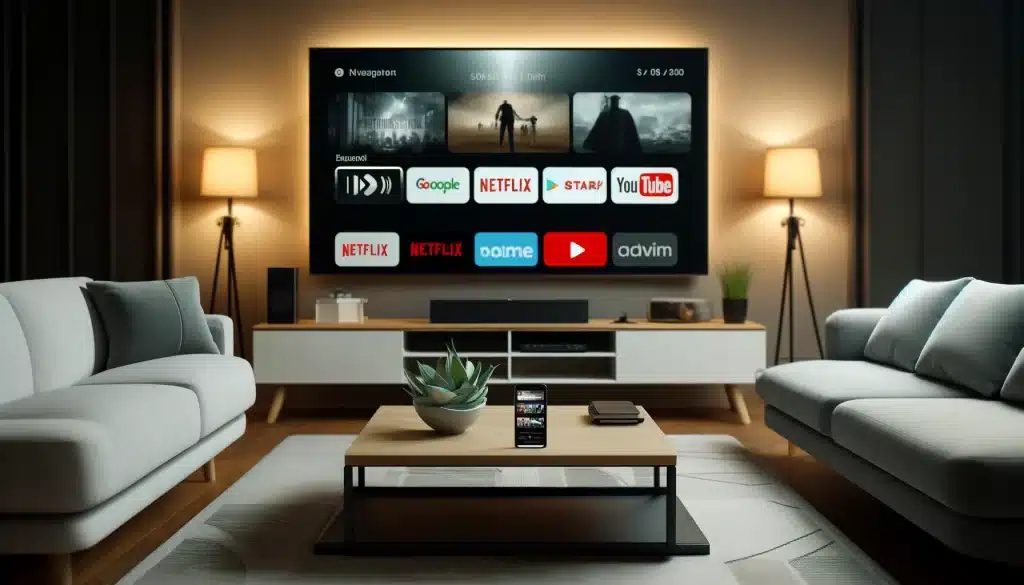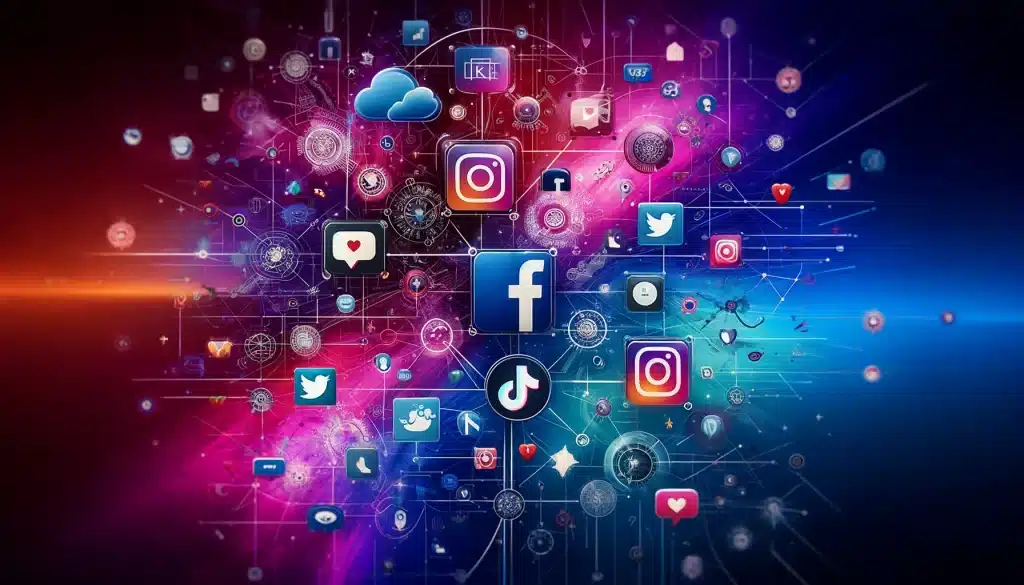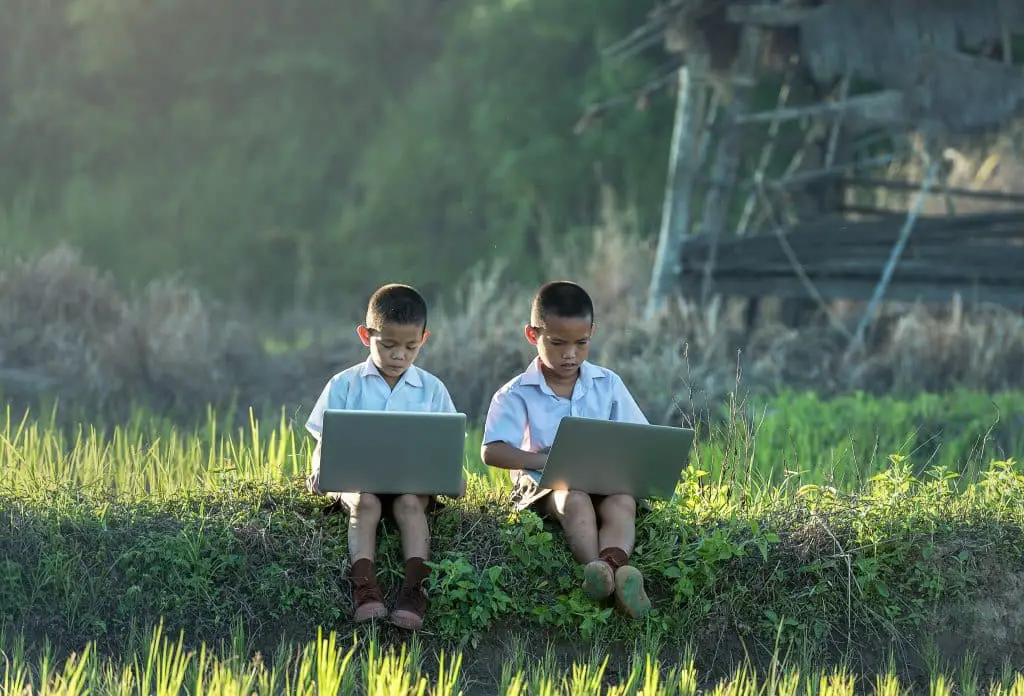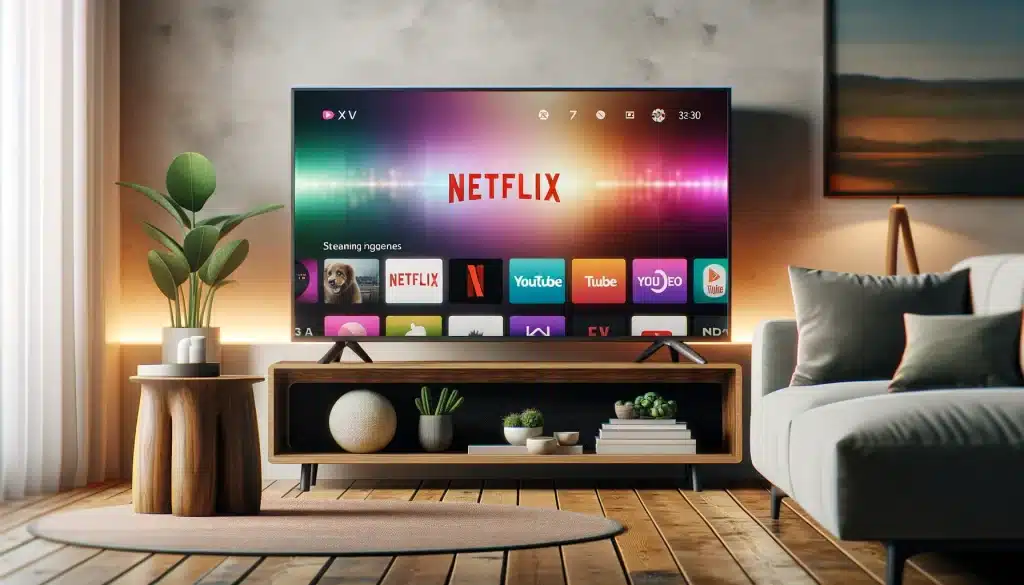Surely at some point in your life you will have heard the classic complaint about young people who watch too much TV, but is this story still true? As it turns out, the focal point of any living room is getting less attention from young people than you might think.
TV in the UK
According to one recent Ofcom studyyoung people watch almost seven times less TV than those over 65; the study found that those over 65 watch television for an average of six hours a daywhile young people between 16 and 24 watch it for only 53 minutes a day, a drop of two thirds compared to ten years ago.
This leads to the question: What do young people watch or do instead of TV?
The rise of the smartphone instead of the TV
You don’t have to be a teacher or parent to know that children and young people are spending more and more time on their phones; an average person in the UK passes on average four hours a day on phones, with young people also spending more time staring at their devices.
Social media, short videos (such as YouTube and TikTok) and mobile games are all designed to grab and hold our attention and often specifically target young people and children; of course, phones also give access to educational toolsso you shouldn’t target them too much.
Online game
The video game industry is booming; while games have been around for decades, online gaming has introduced a whole new aspect, making it a matter of socialization as well as entertainment.
While playing video games was once a largely solitary pastime, players can now spend hours immersing themselves in the digital world with friendswhether they are classmates or people on the other side of the world.
Obviously, this made the game much more engaging and time-consuming for young people.
In 2019, young people aged 12 to 15 spent an average of 11.6 hours a week playing games, according to Statista. This also includes mobile games, which have made the game even more accessible to young people.
There’s simply more to do on your phone and PC, rather than your mundane TV
The Internet influences almost every part of our daily lives; what was once a research tool has allowed us to work, study, have fun, socialize, consume media… the list is practically endless. Simply put, today there are many more things for young people to entertain themselves with at home.
Exercise regimes are now much more interactive thanks to internet-dependent devices like Peloton bikes; cooking and baking is no longer just about subsistence, but it has evolved into a creative business where people can share recipes and results online; hobbies are something young people share and enjoy in the digital sphere rather than alone in their bedrooms.

And we must not forget that the aforementioned social media are no longer just an act of consumption: young and very young people are at the forefront of creating content on social platforms; whether they have millions of followers and a career as an influencer, or are simply making funny videos and broadcasting their hobbies, the current generation is taking a much more active role in the media they consume (and create), which also demands their time.
The end of traditional television, or will it simply evolve too?
It’s a question that’s been bouncing around the offices of the BBC, ITV and Channel 4 for years: Is the rise of streaming TV the final blow to traditional television?
Young people have always been early adopters and supporters of new technologies, so it is no surprise that young people are progressively moving towards streaming on-demand TV, rather than watching traditional television; some Gen Xers may even have grown up in homes that don’t even have a TV license.

There has been much speculation in recent years that the BBC will soon will delete your TV licenseaccepting that the way people consume television has changed and is more dependent on subscriptions and advertising.
Perhaps this will be the final acceptance that younger generations are more interested in video-on-demand than traditional television, but it is still too early to give the final word: whatever happens, we will certainly see continued changes in the way TV and all media are consumed in the coming years.
And TV in Italy?
Even in Italy, young people’s habits regarding TV and digital devices have changed considerably in recent years; according to recent studies, young Italians are spending less and less time in front of traditional TV and more and more time on their smartphones and social media.
The difference is that the main Italian television networks (RAI and Mediaset among all) they still haven’t realized that it could be a problem for them if they don’t update with the new generations.
Long story short, the days of returning home at 1.30pm and being able to watch Dragon Ball after lunch are over; In fact, I started by doing research in a foreign country because it seems that Italy is not psychologically ready for something like this.
Use of Smartphones and Social Media
A relationship of 2024 shows that 89.1% of Italians browse the web, almost at the same level as those who use smartphones.

Among the social media most used by young people, WhatsApp is in first place with 93.0% use, followed by YouTube (79.3%), Instagram (72.9%) and TikTok (56.5%); in reverse, platforms like Facebook and Twitter have seen a decline in popularity among those under 30.
Time Spent Online
Italian teenagers they pass on average more than 4 hours a day on social media; this time is mainly dedicated to contacting friends, watching films or listening to music. Furthermore, in 2024, young people between the ages of 12 and 15 spend approximately 11.6 hours per week playing video games, which also includes mobile games, making gaming very accessible and popular.
Consumption habits and social impacts
Italian families are spending more on digital devices, with overall spending exceeding 8.7 billion euros; this figure reflects how central digital technologies have become to daily life.

The impact of technology is also visible in the way young people interact and entertain themselves, with a growing preference for streaming content (if we’re talking about legal action, at least) and on-demand compared to traditional TV.
Problems and challenges
Despite technological changes, young Italians face several challenges; according to relationship “Youth 2024: Budget of a Generation” of the National Youth Councilthe problems include job instability, economic difficulties and territorial and gender inequalities.
However, a strong resilience also emerges among young people, a trust in Europe and a desire to actively contribute to the country’s social and economic change.
Do Mediaset, RAI and the singing company have a plan B?
Mediaset and RAI are implementing various strategies to adapt to changes in media consumption.
RAI, for example, is renewing its schedules for the 2023-2024 season, introducing new programs and faces to attract different segments of the public, even the younger one (hopefully); between noveltythere is the return of programs such as “Presa Diretta” and the introduction of new talk shows and in-depth analyzes hosted by well-known figures such as Monica Maggioni and Riccardo Iacona, which is more the equivalent of a parent showing videocassettes of the “good cartoons of the past”, in television style, but it is not certain that a relatively young person today will become a constant television viewer, on the contrary.

Mediaset, for its part, has developed the Mediaset Infinity platform, which offers a vast range of on-demand and streaming content. This service is designed to compete with large international platforms such as Netflix and Amazon Prime Video, offering users the ability to watch programs, films and TV series at any time.
Both broadcasters are therefore trying to diversify and digitize their offering, trying to intercept the new consumption habits of young Italians who prefer content accessible via the internet rather than traditional broadcast televisionHowever, it remains to be seen whether these efforts will bear fruit in a panorama that is completely changing its course.
Possible futures of TV
The future of television seems to be increasingly oriented towards a hybrid model that combines traditional broadcasting with on-demand digital content; the growing popularity of smart TVs and streaming devices has made it easier for users to access the content they want at any time, radically changing consumption habits.
In this scenario, traditional broadcasters such as RAI and Mediaset they may need to step up their investments in digital platforms and exclusive content to maintain their relevance; Furthermore, interaction between social media and TV, such as live-tweeting during programs and interactive integrations, could become a key component in engaging younger audiences.

Another development could be the increasing use of artificial intelligence to personalize the viewing experience, suggesting content based on users’ individual preferences. This approach, already used by platforms such as Netflix, it could help traditional broadcasters compete with streaming giants.
In summary, the future of TV in Italy will probably see a further shift towards digital, cwith a growing emphasis on on-demand contentinteractivity and personalization, as traditional broadcasters work to adapt to an ever-evolving media landscape.
TV connected via Ethernet or Wi-Fi
The possibility of watching TV directly connected via Ethernet cable or Wi-Fi, replacing the old antenna cable, is already a reality and could become increasingly common in the future; Modern smart TVs come with Wi-Fi connectivity and Ethernet portsallowing users to access a wide range of digital content and streaming services without the need for a traditional antenna cable connection.

This transition is fueled by the spread of high-speed networks and the growing availability of streaming services; with a stable Internet connection, users can access platforms such as Netflix, Amazon Prime Video, Mediaset Infinity and RaiPlay directly from their TVs, enjoying HD or 4K viewing quality; it should also be noted that Mediaset Infinity it already has traditional channels streaming via the internet, as does Raiplay.
Furthermore, the integration of technologies such as artificial intelligence and cloud computing into smart TVs offers advanced features, such as content personalization, voice recognition and the ability to interact with other smart devices in the home; this makes the television experience more seamless and integrated with the contemporary digital lifestyle.
In conclusion, the future of television is set to become increasingly connected and interactive, with Wi-Fi and Ethernet playing a crucial role in providing access to high-quality content and innovative services, reducing the dependence on traditional antenna cables.
#young #people #watch #true